 |
| My service dog's gear always takes up at least one drawer in the hotel room. |
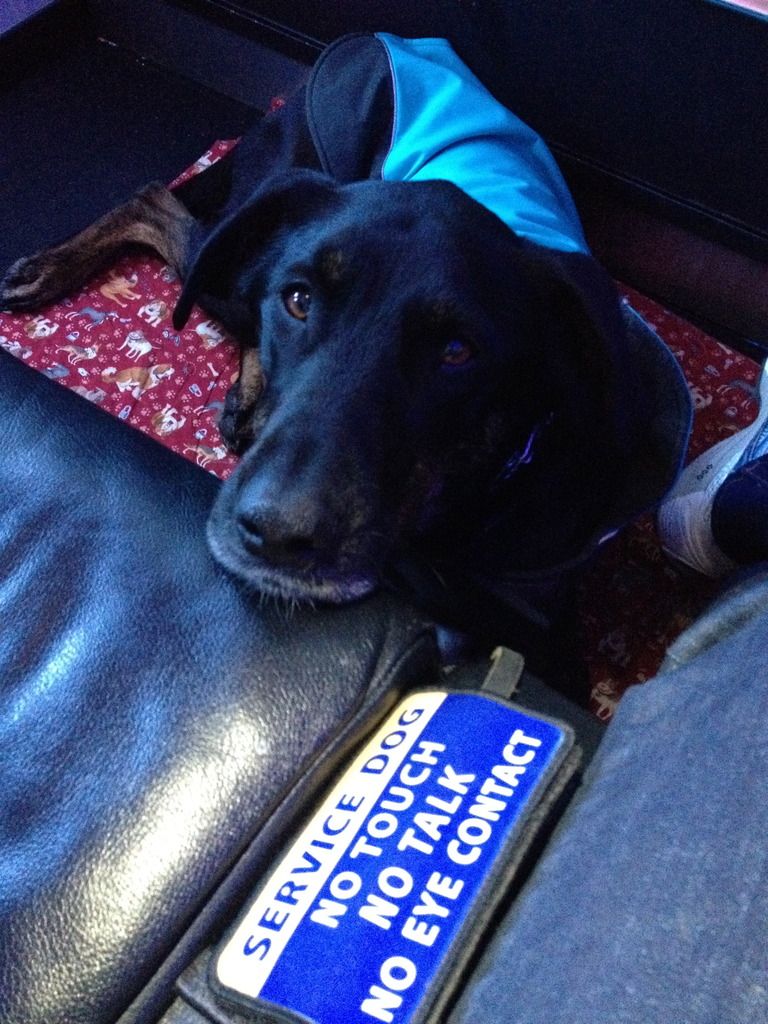 |
| Experienced traveler Juno: Unimpressed by all airplane-related things. |
As ever, my girl was a pro, despite my nerves. At security, she got a pat down from TSA because I chose to call her through the metal detector wearing her service dog gear. Hilariously, when the first TSA agent discovered Juno was female, he immediately called for "female assist." (This has never happened with Kaline, my current—male—service dog, even if he's about to get a pat down from a female agent).
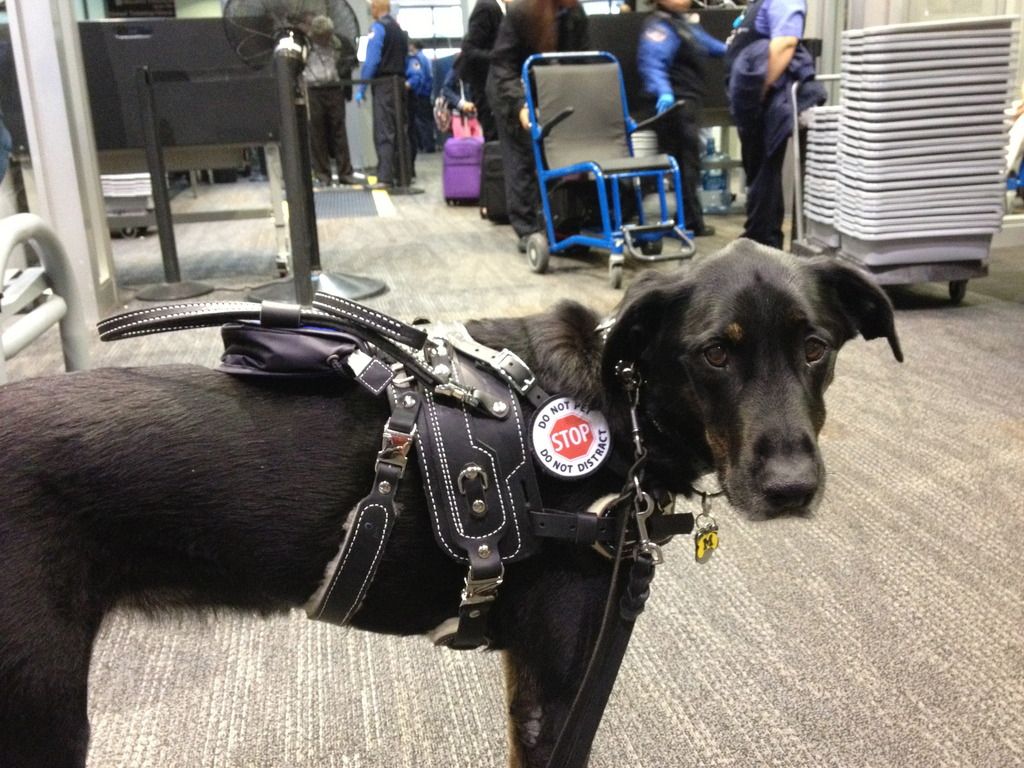 |
| Juno just past security at SFO. |
 |
| Juno on her first flight. I always remove my dog's service dog gear for the flight so s/he can fully relax. |
I should note that airports legally must have a service dog relief area. However, that area does not have to be conveniently located or in any way appealing to dogs. San Francisco's area seems to be miles away from everything useful, and is slightly smelly and rather uncomfortable rocks dumped into a chain-link enclosed pen. They've tried to make it cute by having you follow little pawprints to get there, but after fifteen minutes of following said pawprints, you start to get a little annoyed.
Which brings me to one of the major perks of traveling with a male service dog who lifts his leg. Any vertical surface can be a potty spot! No need to wander about looking for grass, dirt, or gravel. Find a handy pole somewhere out of the way, and you're golden.
In that regard, Kaline has learned to do something Juno never had the opportunity to do: How to pee inside in the best service dog relief area ever. Just before Kaline's first flight, the Detroit airport put in a fabulous relief area inside security. The amount of anxiety this relieves can't really be overstated.
First of all, having to go through security twice due to needing a potty break is just a pain, especially if your disability affects your stamina and/or mobility. Trying to get out to the distant potty spot and then having to do security during a layover is even worse. Having a relief area inside security saves a handler innumerable amounts of stress and energy.
And you may have seen the story that made news of the service dog who had such a bad accident on a plane that they had to make an emergency landing ... That story features prominently in the nightmares of many handlers. The easier it is to potty your dog right before you fly, the better! The first time I asked Kaline to eliminate there, he looked at me like I was insane—"We don't PEE inside! What's the matter with you?" Now, when we get off the plane in Detroit, he books it straight to the area by Gate 34.
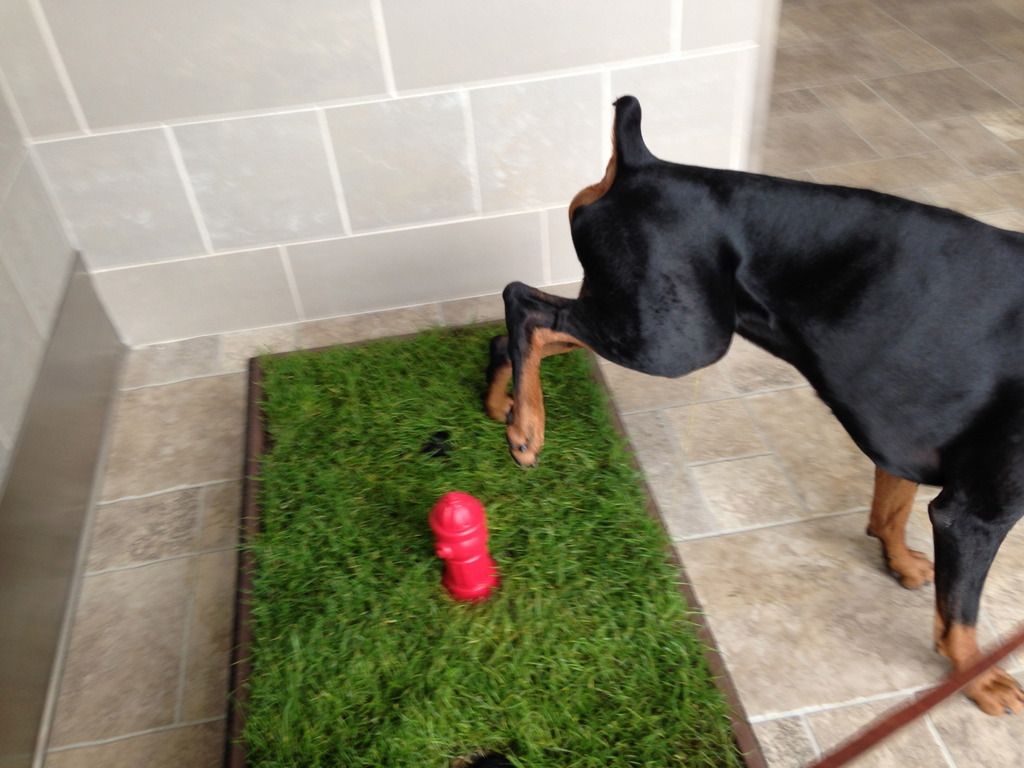 |
| Can't beat the Detroit relief area. |
Kaline's first flight was nerve-wracking in different ways from Juno's. With him, I had a good idea of what to expect at the airport and on the plane. I was able to prepare him more specifically for the ordeal. We practiced the stand for examination endlessly, since he is a far more stranger-social dog than Juno and would likely try to lick the TSA agent to death if allowed. He learned to curl up in a little ball at my feet and ride in the passenger foot-space of the car, getting comfortable in a small space and becoming accustomed to the rumbling feeling, as well as occasional "turbulence" if my dad was the driver.
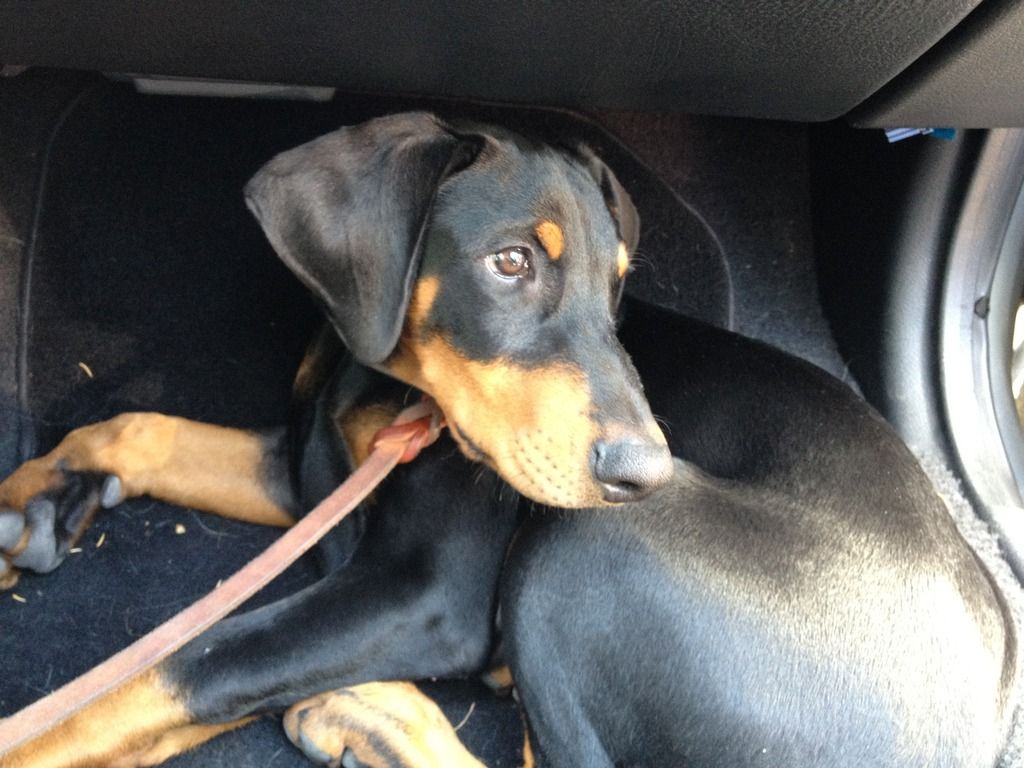 |
| Baby Kaline in the passenger foot space of my car. |
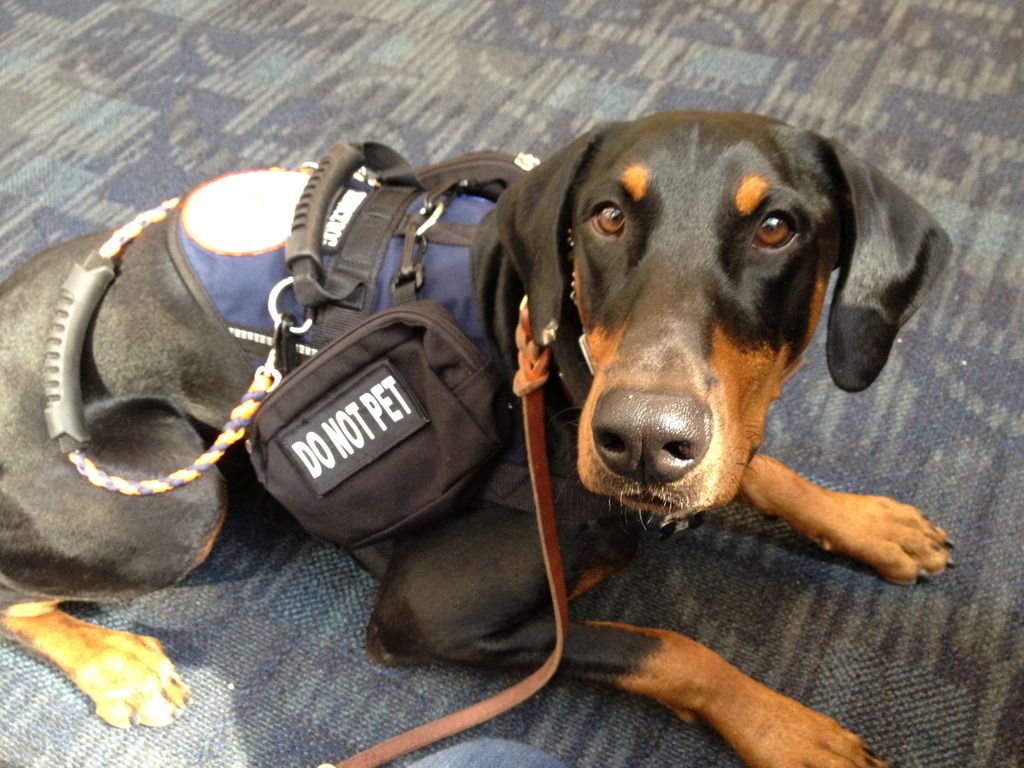 |
| Kaline waiting to board his first flight. |
 |
| Kaline on his first flight, once the excitement of takeoff had ended. |
Though Kaline did well in the air, his apprehension during takeoff and landing was a bit worrying to me. However, with every flight he took, that diminished. Today, Kaline is a pretty experienced flyer and is unimpressed by all the strangeness of air travel.
All he needs is a comfy headrest, and he's good to go!
Colt

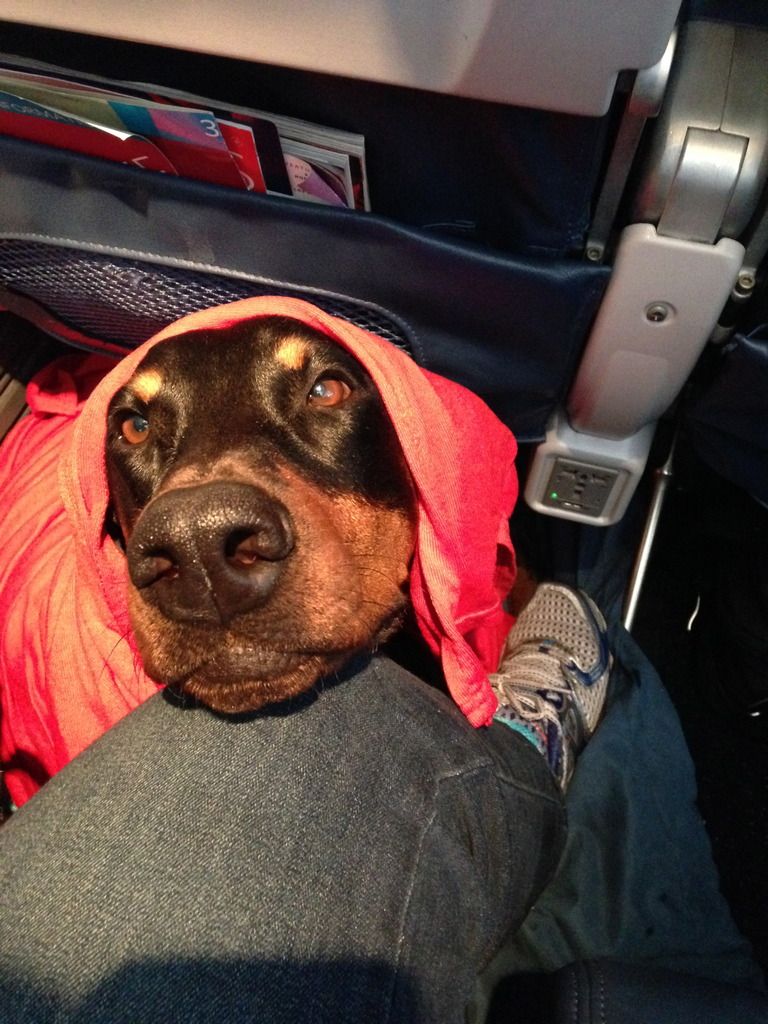
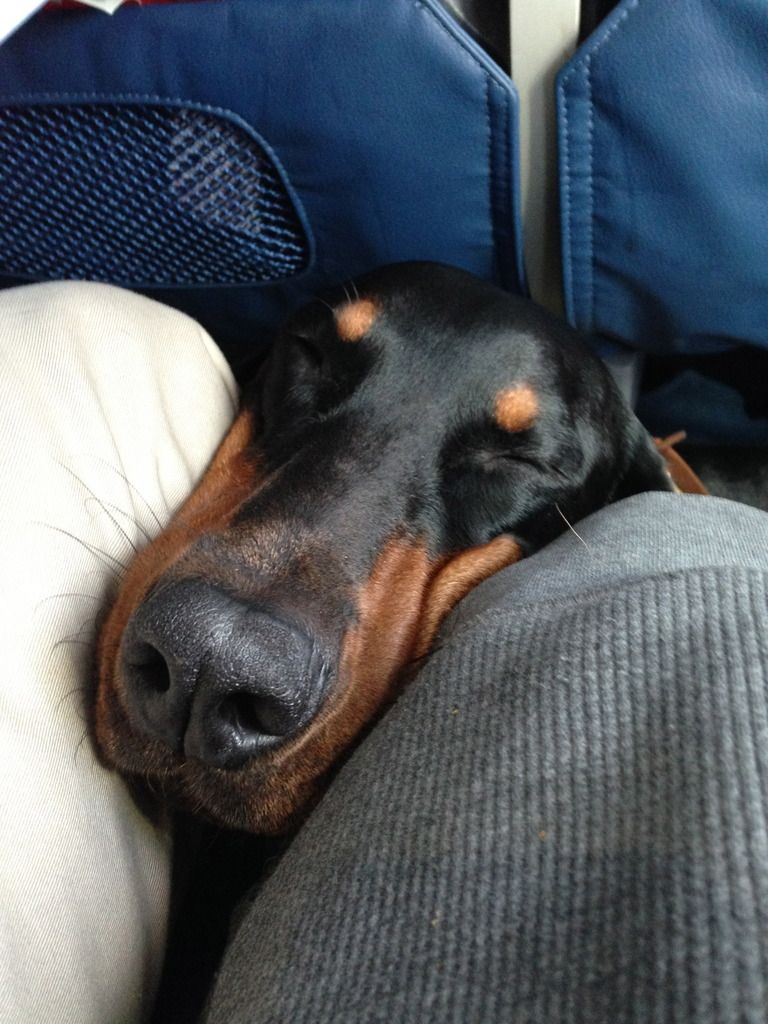

No comments:
Post a Comment